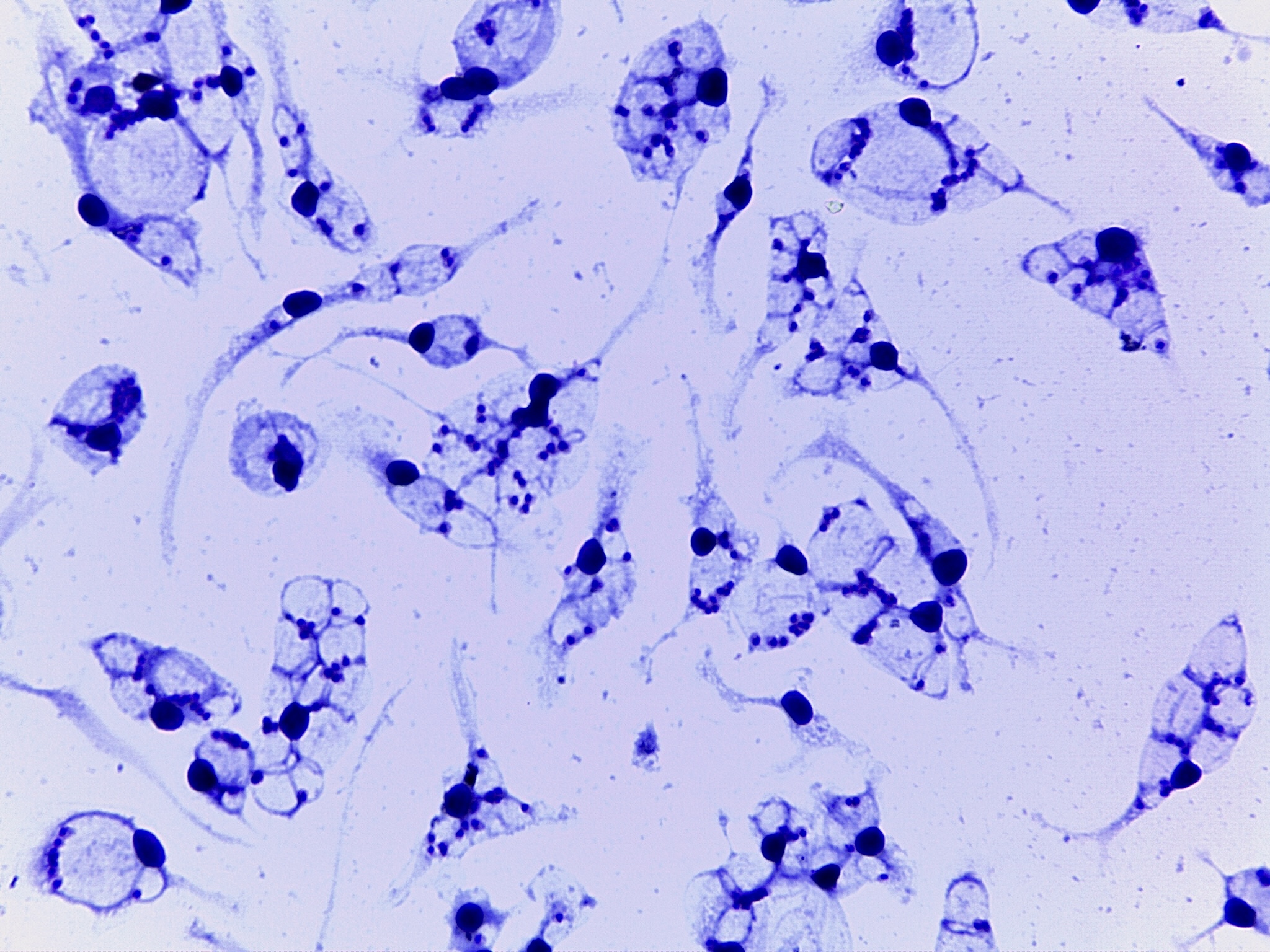

Immune system cells (macrophages) infected with Leishmania amazonensis’s amphotericin B-resistant strain (credit: Elizabeth Magiolo Coser and Bianca Alves Ferreira)
Trials conducted at the State University of Campinas (UNICAMP) confirm that the isolate of Leishmania amazonensis from a 46-year-old patient is resistant to amphotericin B.
Trials conducted at the State University of Campinas (UNICAMP) confirm that the isolate of Leishmania amazonensis from a 46-year-old patient is resistant to amphotericin B.

Immune system cells (macrophages) infected with Leishmania amazonensis’s amphotericin B-resistant strain (credit: Elizabeth Magiolo Coser and Bianca Alves Ferreira)
By Thais Szegö | Agência FAPESP – Researchers in Brazil who analyzed samples from a 46-year-old patient in the Northeast state of Maranhão found an amphotericin B-resistant strain of the parasite Leishmania amazonensis circulating for the first time in the country. Amphotericin B is widely used to treat cutaneous leishmaniasis, a skin infection caused by sandfly bite.
The disease is characterized by skin lesions that persist for months but can be cured. In the case in question, however, the patient had the diffuse form of cutaneous leishmaniasis, which is rare, hard to treat, and associated with an inadequate immune response by the organism.
The patient also had HIV, which causes AIDS, making his condition even harder to combat. He had previously received treatments that were unsuccessful. The parasite was refractory to a therapeutic regimen involving the main drugs used against leishmaniasis in Brazil: meglumine antimoniate (preferred for several decades despite low efficacy) and amphotericin B (one of the few options available in Brazil for treating diffuse cutaneous leishmaniasis).
The researchers decided to find out how resistant the strain isolated from this patient was to amphotericin B by means of in vitro and in vivo trials. “We used mice infected by the isolated parasite for the in vivo model. We treated the mice with amphotericin B and two other drugs to which the patient had not been exposed: miltefosine and paromomycin,” says Adriano Cappellazzo Coelho, principal investigator for the study and a professor at the State University of Campinas’s Institute of Biology (IB-UNICAMP) in São Paulo state.
The study was supported by FAPESP via four projects (16/21171-6, 20/01948-1, 19/22175-3 and 22/06176-2). An article reporting the findings is published in the journal PLOS Neglected Tropical Diseases.
The scientists compared the results obtained in vitro and in vivo with those of tests involving another strain of the same species that is known to be sensitive to these drugs. They concluded that the strain from the patient concerned was resistant to amphotericin B in both instances. The mice given the drugs not previously used to treat the patient (miltefosine and paromomycin) responded similarly to those infected with the sensitive strain, showing that the response to amphotericin B accounted for the difference.
“Our study showed for the first time that a strain resistant to amphotericin B is circulating in Brazil. Because the drug is one of the few options available to treat diffuse cutaneous leishmaniasis, this points to an urgent need for alternative drugs to combat the disease, since failure to treat leishmaniasis is a serious public health problem in Brazil,” Coelho says.
In Latin America, more than 1 million cases of cutaneous leishmaniasis were notified between 2001 and 2021, with 37% occurring in Brazil. Although the number of cases in Brazil fell 14.3% between 2017 and 2021, over 15,000 were notified in 2021, occurring in almost every state but above all in the Amazon region. The main risk factors associated with the disease are being male and living in a home of poor quality near or in the forest areas where the vectors, phlebotomine sandflies, prefer to breed.
The article “Amphotericin B resistance in Leishmania amazonensis: In vitro and in vivo characterization of a Brazilian clinical isolate” is at: journals.plos.org/plosntds/article?id=10.1371/journal.pntd.0012175.
Republish
The Agency FAPESP licenses news via Creative Commons (CC-BY-NC-ND) so that they can be republished free of charge and in a simple way by other digital or printed vehicles. Agência FAPESP must be credited as the source of the content being republished and the name of the reporter (if any) must be attributed. Using the HMTL button below allows compliance with these rules, detailed in Digital Republishing Policy FAPESP.





